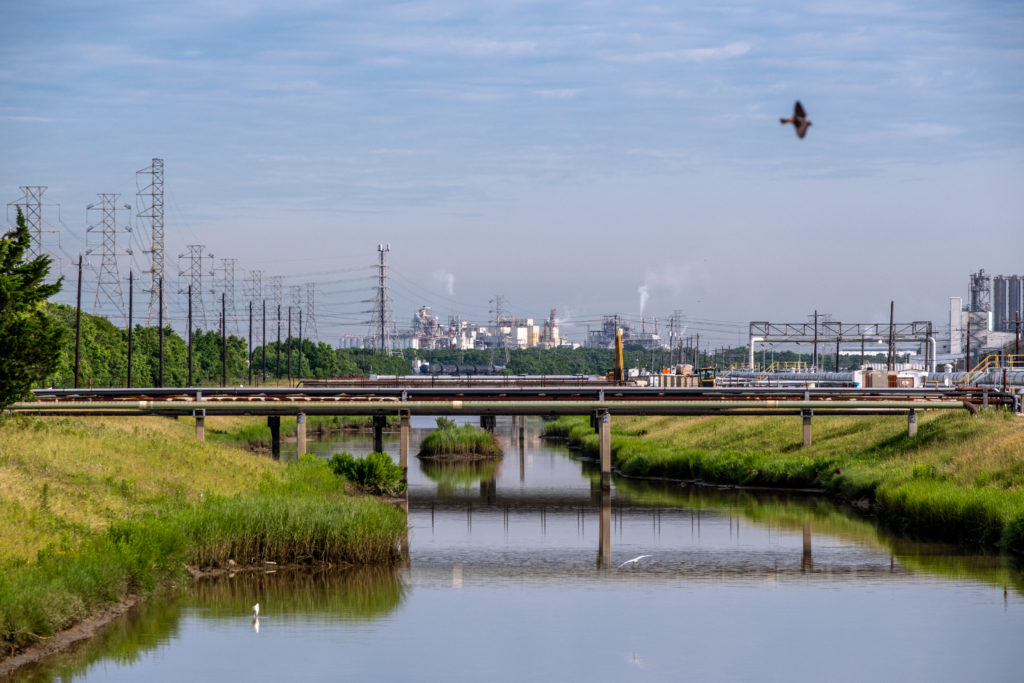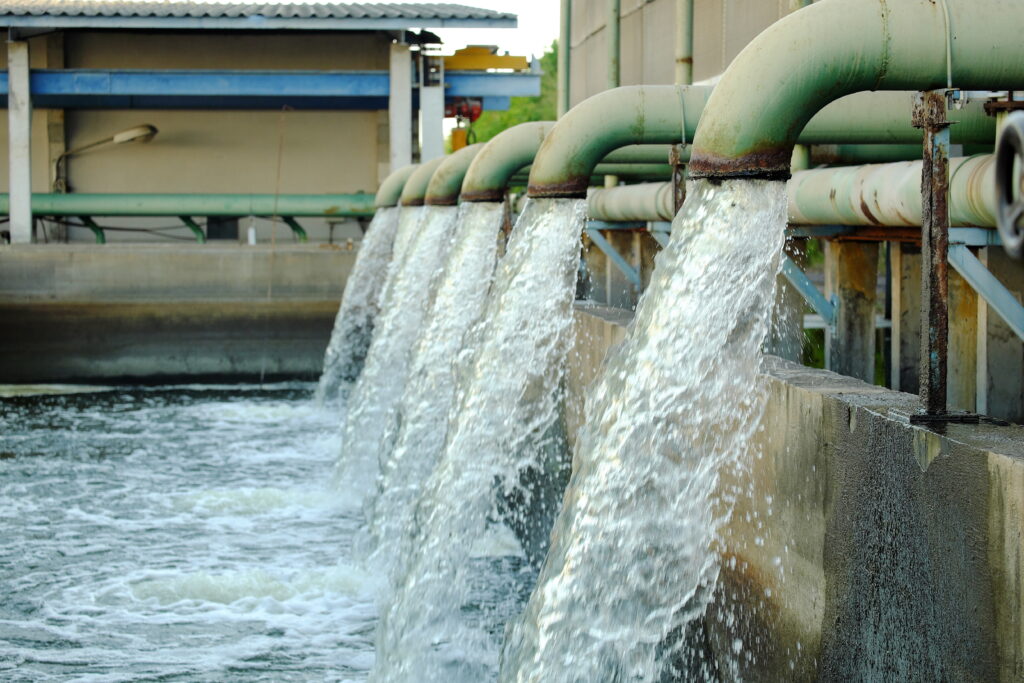Outdated Federal Water Pollution Control Standards for Oil Refineries, Plastics Plants, Fertilizer Factories, and Other Industries.
The goal of the Clean Water Act is to prevent, reduce, and, ultimately, eliminate discharges of pollution so that our waterways are safe and clean for downstream communities and aquatic life. In order to achieve these goals, the federal Clean Water Act charges the U.S. Environmental Protection Agency with establishing pollution limits for industrial facilities based on the best available treatment methods, and then tightening those limits at least once every five years where data show treatment technologies have improved. These pollution limits are called effluent limitation guidelines or ELGs.

EPA is falling far short of meeting its obligations under the Clean Water Act. The guidelines for 40 of the 59 industries regulated by EPA were last updated more than 30 or more years ago, and 17 of those date back to the 1970s. Outdated standards mean more water pollution is pouring into U.S. waterways than is allowed under the Clean Water Act.
For example, EPA’s standards for inorganic chemical plants and plastic molding plants have not been updated since 1984, even though commercially available pollution-control systems have advanced dramatically since then. Standards have not been updated for oil refineries since 1985; for fertilizer manufacturing facilities since 1986; for metal smelting facilities since 1990; for plastics and organic chemical plants since 1993; and for pesticide chemical plants since 1998.
EPA’s failure to make sure ELGs keep up with technology has real-world consequences for downstream communities and the environment. Half of U.S. river and stream miles that have been assessed fail to meet water quality standards because they are impaired by pollutants—meaning they don’t support their intended uses, like aquatic life and as sources of drinking water.
EPA has also ignored some of the serious weaknesses in the current national pollutant limits. For many industries, EPA has not set limits at all for toxic pollutants such as dioxins and selenium, algae-causing nitrogen and phosphorus, or contaminated stormwater.
Legal Challenge Against EPA’s Outdated and Weak Water Pollution Limits:
In September 2021, EIP and 60 other groups sent a letter to EPA Administrator Michael Regan demanding that the agency do its job and fix its annual review process and update water pollution standards to reflect modern wastewater treatment controls. The letter states that EPA’s “current review process is not only hindering the Agency from cleaning up some of the most obvious sources of water pollution but also preventing the country from restoring its waterways.”

In April 2023, EIP, representing 13 environmental groups, filed a legal challenge, in the U.S. Court of Appeals for the Ninth Circuit, to EPA’s decision on January 31, 2023, not to update outdated and weak water pollution control technology standards (“effluent limitation guidelines” or ELGs) for seven key industrial sectors: petroleum refineries, inorganic and organic chemical manufacturers, plastics manufacturing facilities, fertilizer plants, pesticide manufacturers, and metal smelting plants.
These industrial sectors are large sources of water pollution, dumping billions of gallons of wastewater into our rivers, streams, and lakes each year. Yet the ELGs for these point source categories are decades old and, in many cases, do not limit discharges of nutrient pollution or toxics like benzene, mercury, polycyclic aromatic hydrocarbons (PAHs), selenium, per- and polyfluoroalkyl substances (PFAS), and heavy metals as required by the Clean Water Act. Despite extensive data documenting advances in wastewater treatment controls for nutrient and toxic pollution over the past several decades, EPA has not updated the ELGs for these seven industrial categories.
The good news is that there are available wastewater treatment technologies to clean up pollution from these and other industrial sources of pollution. EPA can also adopt and implement more efficient review processes that help meet its obligations under the Clean Water Act.
EIP and our partners are going to court to hold EPA accountable for doing its job to reduce pollution from these industrial sectors as required by the Clean Water Act.
Sector Breakdown:
- Oil refineries: The Environmental Integrity Project found that 81 refineries across the country discharged over 15.7 million pounds of nitrogen, 60,000 pounds of selenium, and 1.6 billion pounds of chlorides, sulfates, and other dissolved solids into U.S. waterways in 2021. EPA has not revised the guidelines for petroleum refineries since 1985. The current effluent guidelines for refineries include no limits for selenium, benzene, nickel, cyanide, lead, mercury, chlorides, sulfates and many other contaminants that EPA’s own 2019 report identified as being discharged by refineries.
- Plastics and chemical manufacturing (organic chemicals): EPA estimates that this industrial sector includes 609 facilities that manufacture end products like plastic resins, PFAS “forever chemicals,” synthetic fibers (rayon, polyester, etc.), benzene, solvents, and a host of other chemicals and discharge to waterways. These facilities release millions of pounds of pollution, including benzene, salts, nitrogen compounds, oil and grease, and metals like aluminum, zinc, and lead into waterways, according to EPA’s latest review of industrial dischargers. The technology-based standards for this industry are 30 years old, with EPA not updating them in any way since 1993 and most of them not since 1987. The current limits do not include any controls on small plastic pellets – called “nurdles” – that are sometimes released from plastics manufacturing facilities into stormwater and wastewater.
- Plastics molding: EPA estimates that 120 facilities in this industrial sector discharge pollutants to waterways. Among the toxic pollutants of concern discharged without any federal limits include phthalates, PFAS, nitrogen, N,N-Dimethylformamide, and microplastics in stormwater. EPA has not revised its technology-based limits for plastics molding and forming plants since the agency first set the limits in 1984, almost 40 years ago, even though the standards are supposed to reflect “best available technology.”
- Chemical fertilizer: EPA’s most recent estimate identified 59 chemical fertilizer plants discharging pollution into waterways in the United States. Among these are 21 nitrogen fertilizer (ammonia) manufacturing plants that released an estimated 7.7 million pounds of total nitrogen pollution in 2021. EPA has not updated standards for fertilizer plants since 1986. The current limits do not control other fertilizer-related pollutants, like selenium, total chromium, zinc, iron, nickel, cadmium, cyanide, and lead. The largest ammonia manufacturing plant in the U.S. — CF Industries’ Donaldsonville, LA, Nitrogen Complex –discharged an average of over 8,000 lbs. of nitrogen per day in 2021.
- Metal smelting: EPA estimates that 56 facilities in this metals manufacturing sector (“nonferrous” means not including iron or steel) dumped over 100 million pounds of pollution into waterways in 2019. This sector includes some of the most noxious industrial processes – smelting and metals recycling. The national pollutant limits for this category have not been revised since 1990, but wastewater treatment has vastly improved in the last 30 years. The current limits for this industry do not include any controls on stormwater pollution, meaning that contaminated runoff from these sites usually has no limits. For instance, there have been high levels of fluoride, zinc, nickel, cadmium, and potentially other metals in stormwater runoff from aluminum smelters.
- Pesticide manufacturing: EPA estimates 31 pesticide chemical plants in this sector discharge pollution into waterways, including pollutants like the pesticide active ingredients being manufactured, nitrogen, benzene, cyanide, and more. But EPA has not updated the guidelines for pesticide manufacturing since 1998. Nitrogen remains unregulated by the federal rule despite significant discharges. For example, the Syngenta facility in Saint Gabriel, Louisiana, discharged over 303,000 pounds of total nitrogen in 2021, more than twice as much nitrogen as the average municipal wastewater treatment facility.
- Inorganic chemicals: 229 inorganic chemicals facilities dumped over 2 billion pounds of pollution into waterways in 2019, according to an EPA estimate. This category includes wastewater from the production of many toxic chemical products, like vinyl chloride. It is one of the largest industrial dischargers of toxic pollution in the United States, and the 13th largest nitrogen discharger. EPA has not updated pollution limits for inorganic chemicals since 1984. The current limits don’t control other pollutants that are associated with inorganic chemical manufacturing, like total nitrogen, phosphorous, dioxins, manganese, and PCBs.


